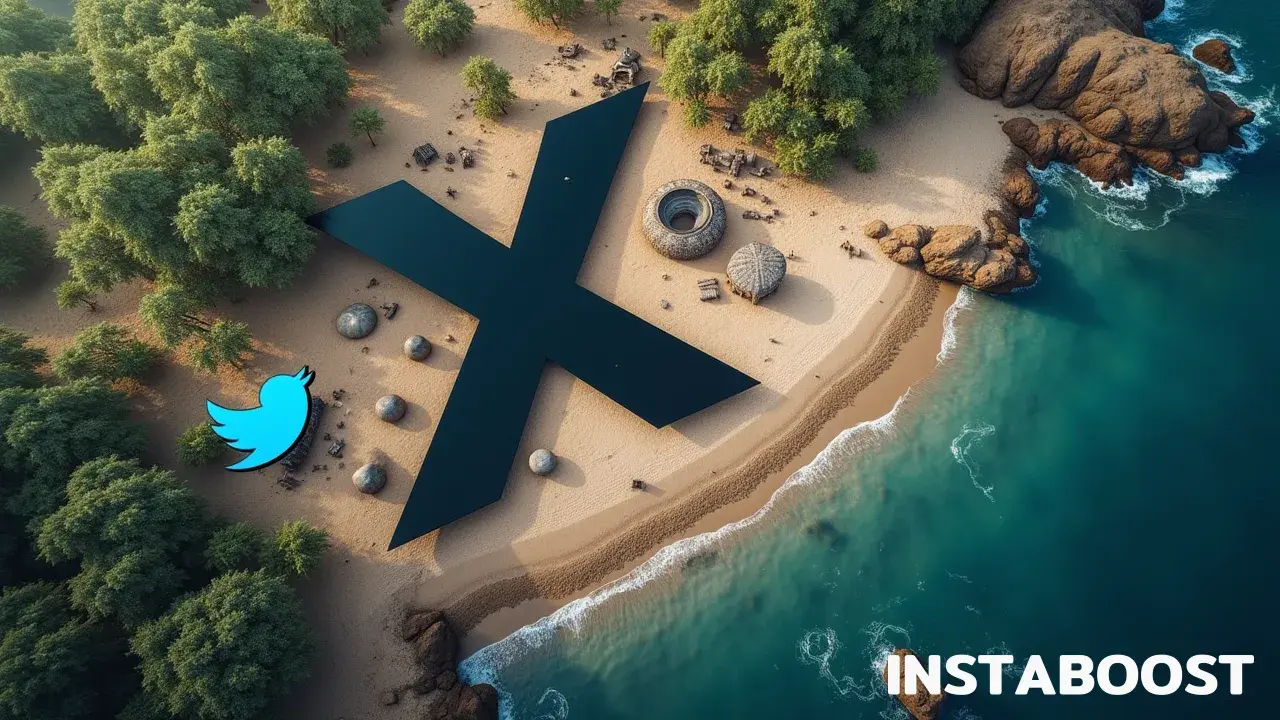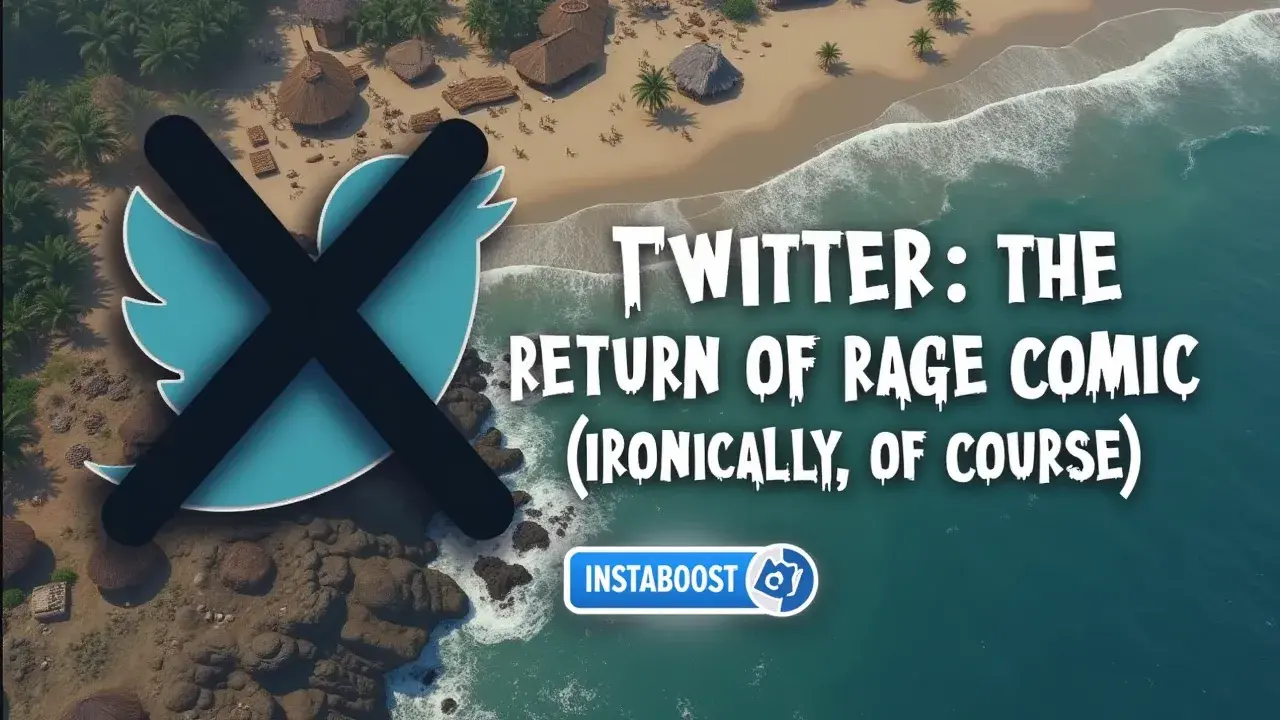Twitter: Is the Rage Comic Revival Ironic or Insightful?
Rage comics are resurfacing on Twitter as a playful blend of irony, nostalgia, and meme fluency. Their return signals how online humor cycles repurpose familiar formats to comment on current trends while winking at their datedness. The mix works when audiences recognize the template and enjoy the layered joke of revival and parody. Choosing formats that tap shared memory and meta-awareness can sharpen timing and boost engagement across meme-savvy communities.
Rage Comics: From Meme Museum to Twitter Timeline
There’s something familiar about seeing those old rage comics – the ones with the simple faces and exaggerated expressions from early 2010s forums – showing up again on Twitter. It doesn’t really feel like typical nostalgia, though. What seems to be happening is this sort of knowing joke among people who spend a lot of time online. When they bring these memes back, it isn’t about loving the old jokes for what they were. Instead, it’s more about poking at the way memes keep getting recycled and at the whole idea of what’s “real” on the internet.
So when trollface or the “Y U NO” guy appears in your feed, you’re not imagining things – people really are using them again, but with an extra layer of irony. Twitter’s design encourages this too. Since you can see how many people are looking at a tweet, these memes can suddenly get a lot of attention, and it almost feels like everyone’s in on the same joke, even if it’s a joke about the joke itself.
Maybe that’s why people keep talking about affordable Twitter marketing, since the platform is always finding new ways to bring old ideas into the spotlight. That brings in more people, and the whole thing picks up momentum. So what you get is this kind of self-aware humor, where people are both making fun of and appreciating the old internet at the same time.
Watching rage comics go from being written off as outdated to being used for commentary is a reminder that, especially in places like Twitter, things never really stay in the past for long.
Maybe that’s why people keep talking about affordable Twitter marketing, since the platform is always finding new ways to bring old ideas into the spotlight. That brings in more people, and the whole thing picks up momentum. So what you get is this kind of self-aware humor, where people are both making fun of and appreciating the old internet at the same time.
Watching rage comics go from being written off as outdated to being used for commentary is a reminder that, especially in places like Twitter, things never really stay in the past for long.

Why Rage Comics Still Resonate on Twitter
The system didn’t come from anyone trying to make something clever or impressive. It was mostly about finding a way to make sense of all the noise. When rage comics first showed up, nobody thought they were anything special.
That was the appeal – they were rough, almost awkward, but that made them useful. You could take these simple faces and plug your feelings right in, and suddenly you had a shortcut for showing what you meant: frustration, relief, being embarrassed, whatever it was. If you spent time online back then, you probably remember what it felt like to open a thread and see someone post the exact face that matched how you felt. Now, when people use rage comics on Twitter, it’s hard not to notice how it connects to all that old history. The vibe is different now, of course. People know these faces are “old internet.”
Bringing them back is like a little nod to everyone who remembers, a way to say, “Yeah, I was here too.” If you search around about how meme cycles work on Twitter, you’ll find people talking about how old jokes resurface, but not much about why it matters when someone brings back a format like this at the right moment.
Bringing them back is like a little nod to everyone who remembers, a way to say, “Yeah, I was here too.” If you search around about how meme cycles work on Twitter, you’ll find people talking about how old jokes resurface, but not much about why it matters when someone brings back a format like this at the right moment.
It’s more than nostalgia. It’s a signal that you know how the internet has changed, and that you’re willing to play with that history instead of ignoring it. The people using these throwbacks are usually the ones who remember how things used to feel, and they use that to say something small and specific about what’s happening now. It’s funny how, on a site where everyone chases numbers – where it’s easy to stumble upon tips to boost followers on Twitter – choosing an outdated meme can actually mean you know what you’re doing, and it says something different to the people who get the reference.
Reverse-Engineering Virality: Irony as Connection Strategy
Automating everything isn’t really the point – it’s about actually connecting with people. Look at how rage comics have started turning up on Twitter again. Folks aren’t simply digging up old memes for a nostalgia kick. Instead, they’re picking out certain bits of internet culture to bring back and thinking about how to use them. There’s some self-awareness in play: using these outdated, sometimes awkward images is a way to show they’re in on the joke, that they know online trends always find their way back. It’s not about easy retweets or trying to get ahead of the algorithm.
Mostly, it’s about reaching others who notice the reference, making a quiet connection with people who get it – even if sometimes it happens in the middle of a thread about how to boost likes on X. While most accounts seem focused on chasing numbers, the return of rage comics is a reminder that understanding the mood and history of internet spaces matters more than the stats. It’s not really a strategy at all – people aren’t plotting things out, they’re just sharing these little inside jokes that let you know who’s been around for a while. That’s why these interactions feel real, even if they’re small. For brands like INSTABOOST that want to help people grow online, it’s a simple lesson: sharing things that feel true or that make sense in context usually goes further than optimizing every detail. Sometimes, knowing when to be a little ironic is part of understanding who you’re actually talking to.
The Limits of Virality: When Numbers Don’t Mean Connection
Sometimes I wonder if all of this actually adds up to anything. Every time I check Twitter, there’s another wave of rage comics, and on the surface, it looks like they’re everywhere – thousands of people liking, retweeting, sharing. But I’m not sure what those numbers really reflect.
When people recycle old memes with new captions and they take off, is anyone actually getting anything out of it, or are we just watching the same things repeat themselves? Twitter shows you big numbers, but most of us are so used to scrolling that it’s hard to believe all those views mean real attention. Lately, the return of rage comics doesn’t seem like people are genuinely interested; it’s more like meme accounts putting out whatever will get the most engagement, or the algorithm surfacing familiar images because they always get clicks. Sometimes people even use tools like INSTABOOST – or buy views from a viral tweet view service – to make things look bigger than they are, but that doesn’t mean there’s any real connection happening.
It’s easy to look at numbers and feel like something important is going on. But seeing these old comics come back, mostly as in-jokes or nostalgia, I keep thinking that going viral isn’t the same as making something that people actually care about. The things that once brought people together feel more like references passed around for the sake of it, and it’s easy to start confusing being visible with being remembered. The way these comics keep resurfacing is a reminder that reach and meaning aren’t always the same thing.
From Meme Metrics to Meaning: Rethinking Impact on Twitter
This isn’t really about settling anything – it feels more like running into something you thought you’d left behind. Seeing rage comics show up on Twitter again isn’t a quirky trend or a joke everyone’s in on; it actually highlights a lot about how the platform works now. There’s a kind of comfort in these old memes – they remind people of a time when the internet felt smaller and messier, and maybe that shared memory brings people together for a moment.
But it also reveals how hollow some viral trends can be. You see these endless threads with rage faces and “le epic win” captions, racking up views and retweets, but that activity doesn’t really tell the story. What’s more interesting is how these comics quietly force us to think about what influence actually means right now. Are people engaging in any real way, or is it more about falling into patterns – scrolling, liking, sharing – nudged along by algorithms and the hope that maybe, this time, something will blow up? The numbers – views, likes, retweets – look like proof of something, and a glance at Twitter post reach can sometimes feel like an answer, but they almost never show how meaning actually spreads, which usually happens in less obvious, slower ways.
I think that’s why seeing rage comics come back hits a chord; they show how easily we drift into old habits and how quickly those feelings disappear. It doesn’t really feel like people are looking for a repeat of the old laughs, or trying to make fun of where internet culture used to be. It almost feels like a quiet invitation to look past the quick hits and ask whether chasing after virality has edged out something more real. Even with all the talk about engagement and impact, what stands out about this wave of ironic memes is the reminder that being seen isn’t always the same as actually connecting with anyone.















